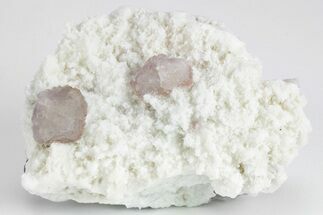2.9" Native Copper Formation - Rocklands Copper Mine, Australia
This is a natural formation of native copper that comes from the Rocklands Copper mine in Queensland, Australia. This mine was discovered in 2006, and until 2019, was operated by CuDeco Limited. It produced a wide variety of copper minerals including azurite, bornite, chalcocite, chalcopyrite, native copper, and malachite, with some cobalt, gold, magnetite, and pyrite ore as well. This specimen is from the 2017 mineral specimen recovery operation that was carried out by UK Mining Ventures Limited.
About Native Copper
Native copper is an uncombined form of copper that occurs as a natural mineral. Copper is one of the few metallic elements to occur in native form, although it most commonly occurs in oxidized states and mixed with other elements. Native copper was an important ore of copper in historic times and was used by pre-historic peoples.
Native copper occurs rarely as isometric cubic and octahedral crystals, but more typically as irregular masses and fracture fillings. It has a reddish, orangish, and/or brownish color on fresh surfaces, but typically is weathered and coated with a green tarnish of copper carbonate.
Native copper is an uncombined form of copper that occurs as a natural mineral. Copper is one of the few metallic elements to occur in native form, although it most commonly occurs in oxidized states and mixed with other elements. Native copper was an important ore of copper in historic times and was used by pre-historic peoples.
Native copper occurs rarely as isometric cubic and octahedral crystals, but more typically as irregular masses and fracture fillings. It has a reddish, orangish, and/or brownish color on fresh surfaces, but typically is weathered and coated with a green tarnish of copper carbonate.
$99
SPECIES
Copper (Cu)
LOCATION
Rocklands Copper Mine, Cloncurry, Queensland, Australia
SIZE
2.9 x 2.5"
CATEGORY
ITEM
#209272
 Reviews
Reviews










